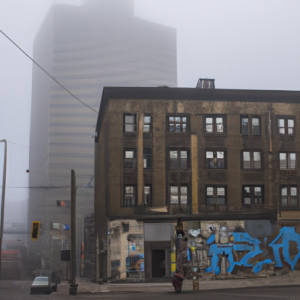Highlighting the Canadian Opioid Crisis: A Deep Dive into Hamilton’s Downtown Area
The ongoing opioid crisis in Canada continues to inflict significant damage on the lives, families, and communities across the nation. Towns and cities alike are grappling with the repercussions of widespread drug addiction, with Hamilton, a Canadian metropolitan, serving as a prime illustration of the devastating impact. For context, here’s a glimpse into the situation in Hamilton’s downtown area. This piece aims to accentuate the effects of the opioid crisis highlighted in this article, along with existing initiatives being pursued to combat the issue at hand.
The Magnitude of the Opioid Crisis in Hamilton
The Hamilton opioid crisis mirrors the broader Canadian opioid epidemic, its consequences permeating various aspects of society such as public health, housing, economy, and crime. The co-occurrence of these issues creates a convoluted mix of challenges within the Canadian socio-economic landscape, making it even more critical to understand the situation fully and find viable solutions.
The Public Health Impact
The spiraling opioid crisis poses a significant threat to public health, with rising overdose cases being a specific concern. The article reveals that emergency services in Hamilton responded to over 350 overdose-related calls in January 2020 alone. The widespread use of opioids stresses the healthcare system while leading to a surge in deaths, making this crisis a formidable public health issue.
The Influence on Housing and Homelessness
The opioid crisis ties in closely with the issue of homelessness. The prevalence of substance use disorders among homeless individuals is higher due to a multitude of factors, including a lack of stable housing. With Hamilton’s homeless population fast increasing, the opioid crisis further deepens the societal chasm.
The Economic and Crime-Related Consequences
With opioids creating a domino effect across multiple domains, their impact is also seen in Hamilton’s economic infrastructure and crime rates. Increased crime rates are a direct fallout from the opioid crisis, with illicit activities such as theft and assaults becoming more frequent. Moreover, businesses are facing multiple challenges as evident from the increasing closure of shops and other commercial establishments.
Hamilton’s Response to the Opioid Crisis
Despite the concerning scenario, Hamilton’s response to the opioid crisis has been commendable, with various strategies and initiatives rolled out to curb the impact. Here are key programs and interventions that form part of the fight against opioids:
- Response strategies: The Hamilton Police and Public Health Services carry out naloxone training, aiming to equip first responders and the public with the ability to manage overdoses effectively. The naloxone kit distribution program is part of the broader Canadian opioid abatement class action.
- Tackling homelessness: In dealing with the rise in homelessness, the city introduced various programs, one of which includes new temporary emergency shelters.
- Business enhancements: Efforts are in place to improve the business environment and further encourage growth.
These interventions play a critical role in mitigating the opioid crisis’s impact and addressing the complex challenges accompanying it.
Wrapping Up
Like parts of Hamilton, several regions in Canada suffer the ripple effects of the opioid crisis, affecting multiple segments of society ranging from public health to housing and the business sector. As we grapple with this crisis, understanding its depths and repercussions is the first step towards finding tangible solutions. Hamilton’s valiant efforts in combating the crisis–from distributing naloxone kits to implementing business service enhancements–serve as vital lessons for other hard-hit areas. As Canada works towards resolving the opioid crisis, it’s a race against time in enacting effective interventions and curbing the situation.
